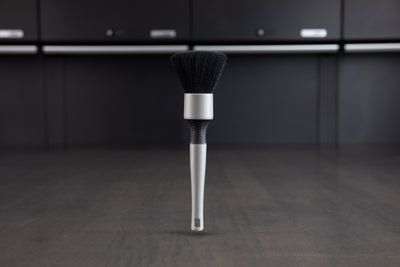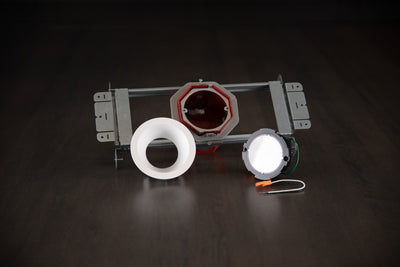How To Prevent Water Spots On Your Car

Dealing with hard water spots on your car can be a pain. There are few things more frustrating in car detailing than trying to remove hard water stains from your vehicle; therefore, it’s much easier to avoid them in the first place.
When water dries on your vehicle, it can leave “hardness” minerals behind or minerals in the water such as iron, calcium, and magnesium that will etch into your vehicle’s finish. These minerals can bond to the clearcoat, basecoat, or sometimes even through to the primer layer of your vehicle’s paint.
When the water spots penetrate the clearcoat of your car, these spots (almost always) cannot be completely removed. So, if you want a dialed in, spot-free finish on your paint and windows, you’ll have to put in some work.
Here are some easy “how-to” steps to prevent water spots:
Dry Your Car After Washing. To prevent water spotting after rinsing/washing your car, you’ll want to dry your car thoroughly. I like to use an electric leaf blower, like the EGO 580, and my favorite drying towels in conjunction with one another after the final rinse.
Drying your car after washing prevents water from sitting on your vehicle; as a result, stopping water spots from forming. Drying your car in the shade is best practice (so the vehicle spends as little time wet in the sun as possible). However, if you move quickly, you should be fine. Spritzing a drying aid or spray wax/sealant will also help increase your drying time.
Avoid Groundwater and Sprinklers. Sprinkler systems and groundwater, like puddles on the road, are one of the most likely culprits of water spots on your car besides improper washing techniques. To prevent them, do your best to avoid parking in front of sprinkler heads or driving through puddles after a storm.
Avoiding sprinkler systems is going to be more important here. Nevertheless, puddles can have the same result. When possible, avoid those too. If you are concerned about puddles, take the car home, and give it a proper wash after driving through one.
Avoid Sunlight While Washing. Another simple way to avoid water spots is to wash out of the sun. While doing the final rinse out of the sun is much more critical than the rest of the wash process, it's best practice to avoid sunlight altogether. Heating the paint via the sun is really what causes water spots, so if the car is never wet while the paint is in the sun, water spots won’t happen.
If washing in the sunlight is the only option, that doesn’t necessarily mean that you are doomed to get water spots. When soap is applied to the car, hardness in the water will not bond to the paint because of the soap. Even if the soap dries, while using a pH-neutral car soap like Koch Chemie Gsf, it will rinse cleanly off the car.
Use Deionized Water When Rinsing your Vehicle. Another preventative measure you can take to prevent water spotting is to ensure you aren’t washing your car with hard water. Installing a water filtration system that filters the water during the final rinsing stage will help.
A pH-neutral soap, as well as a rinseless wash solution will have natural water softening properties. These wash chemicals stop water spotting during the wash itself, so there is no need to use deionized water during any part of the wash besides the final rinse. Just make sure you don’t leave your initial rinse water sit on the car in direct sunlight, and apply the soap immediately after.
Protect Your Car. Putting protection on your car will have two benefits, regardless if the vehicle has a wax, a sealant, or a ceramic coating.
- Your chances of getting water spots decreases. The hydrophobic (water-repelling) properties of the aforementioned paint protectants means less water sits on your car, if any at all. Generally speaking, a coating will be more hydrophobic than a wax or sealant. If water spotting is a concern, a ceramic coating is the way to go.
- Using protectants on your car will allow for a sacrificial layer that can possibly prevent your paint and windows from having permanent staining from water spots that can’t be removed if hard water ends up on your car.
- Sometimes, a simple maintenance wash process works.
- However, if this is ineffective, using the OG decontamination wash process is the second least aggressive method. Try using iron remover, followed by a car soap that is designed to strip wax. Keep in mind, if the car has a wax or sealant as the protection, it may degrade or fail as a result of this wash. Compare the hydrophobic properties of the wax or sealant to when it was freshly applied to assess its integrity.
- Before I move on to polishing, always use a paint prep spray.
- If all else fails, polish the car, and re-apply protection.
Check Your Car for Water Spots Regularly
Checking your car as frequently as possible is paramount to preventing permanent damage from water spots. The longer the minerals from hard water sit on your car, the deeper they will penetrate into the paint. The quicker you catch them, the easier they are to remove and more likely the spots will be removable.
Focus on more horizontal panels, such as the hood, roof, and trunk. This is the most likely area for water spotting, since these panels are less likely to shed water and have the most direct exposure to sunlight.



